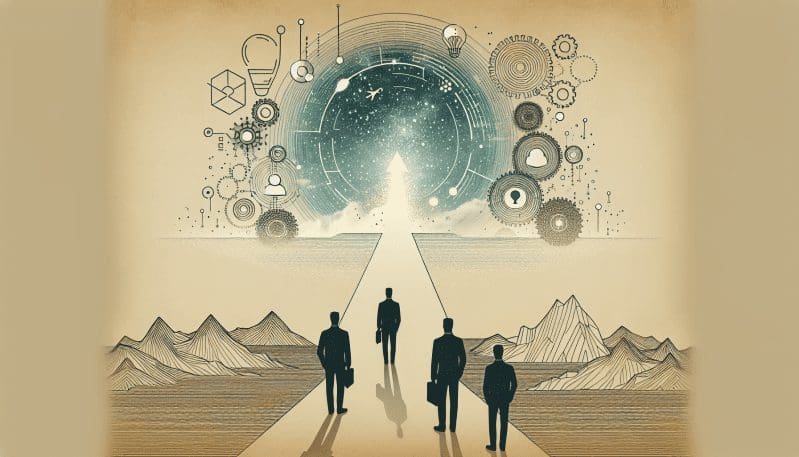The Future of Work: Preparing for the Unseen
- Home
- The Future of Work: Preparing for the Unseen

- Editors Desk
- January 11, 2024
- 0 Comments
As we stand on the cusp of a new era in labor and employment, the dialogue around work is shifting. No longer are we merely discussing the jobs of today, but rather the unpredictable landscape of tomorrow. The rapidly evolving nature of technology — automation, artificial intelligence, and countless other innovations — presents a double-edged sword capable of cutting through the fabric of traditional employment while simultaneously stitching together a tapestry of unforeseeable opportunities.
### The Challenges Ahead
Across the globe, industries are experiencing the seismic impacts of technological disruption. Automation threatens to render certain job categories obsolete, particularly those involving repetitive tasks. Artificial intelligence is no longer a concept confined to science fiction; it is redefining skills, jobs, and entire industries. While these advancements herald a future of efficiency and possibility, they also bring a cloud of uncertainty over the workforce.
Concerns are particularly pronounced for demographics that are often underrepresented in economic forums. These include workers in lower-income brackets, those in regions dependent on singular, traditional industries, and populations with limited access to education and training. For these groups, the future poses not just the question of ‘what jobs will there be?’ but ‘will there be jobs for us at all?’
### Envisioning Policy Frameworks
To transition into this new age with minimal social disruption, we must envision policies that are inclusive and forward-thinking. Education systems need revamping to prioritize not just knowledge, but adaptability and lifelong learning. Skills-based training should be made accessible to all, breaking the barriers that often leave marginalized communities behind.
We must also consider safety nets that extend beyond conventional unemployment benefits, such as universal basic income or portable benefits that protect workers regardless of their employment status. Furthermore, we should be exploring policy initiatives that encourage businesses to invest in their human capital, ensuring that their workforce remains agile and competitive.
### Corporate Practices for Future-Proofing Workforces
Companies, too, have an essential role to play. Developing strategies for ‘upskilling’ and ‘reskilling’ workers can ensure that their employees evolve alongside the company. Additionally, fostering a culture of continuous learning will be integral. Mentorship programs, collaborative projects, and a focus on transferable skills can help create a more resilient workforce.
Moreover, in order to create truly inclusive workplaces, corporate diversity, and inclusion policies must be more than just performative gestures. They should be designed with the intent of harnessing a wide range of talents and perspectives, particularly from those demographics that the changing job landscape could easily leave behind.
### Creating a Proactive Approach
The question remains: How can industries and policymakers anticipate the future and create a proactive rather than reactive approach to workforce development? It requires a multipronged strategy that combines deep analytics with empathetic leadership. Predictive modeling can help us understand potential job market trends, but it is the human-centric policies and practices that will navigate us through them.
Cross-sector collaboration is vital. Educational institutions, private enterprises, non-profits, and governments must create platforms for dialogue and partnership. Apprenticeships, internships, and collaborative projects that blur the lines between education and employment could prove pivotal in preparing for the unseen.
### Conclusion
Indeed, the future of work is laden with both opportunities and challenges. But with a concerted effort that combines insightful policy-making with responsible corporate stewardship, we can embark on this journey with confidence rather than fear. We at No Worker Left Behind believe that by engaging in this critical dialogue and taking bold, strategic actions today, we can ensure that no worker is left behind tomorrow.
The landscape of work is transforming, and it’s time to adapt, innovate, and envision a labor market that is equitable, resilient, and future-proof. For we are not just preparing for a new type of work, but for a new societal paradigm where work, workers, and workplaces are harmonious synonyms in the lexicon of progress and prosperity.

Leave A Comment